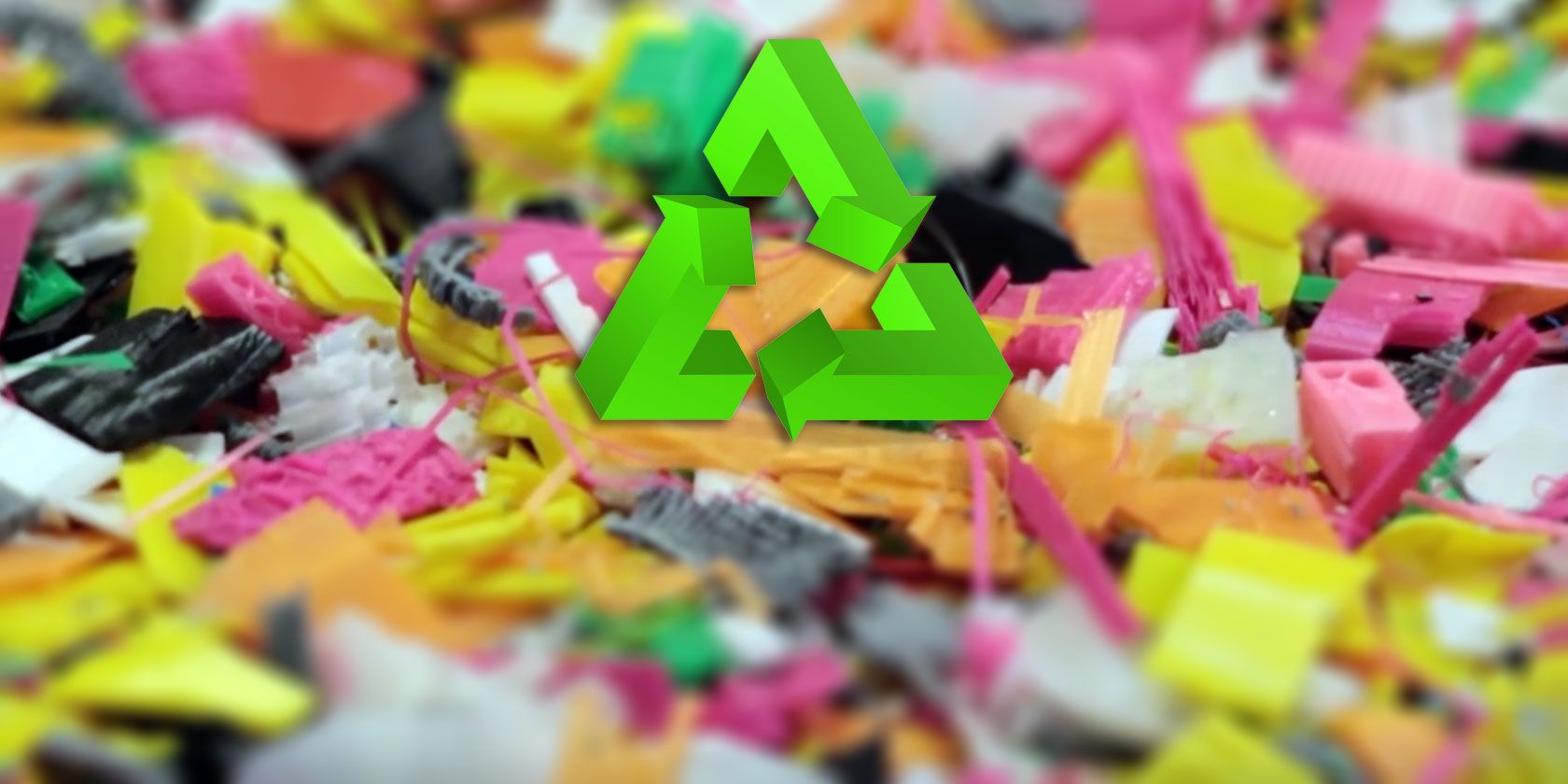You've purchased yourself one of the best 3D printers around. You've learned how to dial it in with our ultimate beginner's guide to 3D printing. Maybe you've even designed your own 3D models with OpenSCAD. You're no longer a 3D printing beginner.
But no matter how good you are at 3D printing, you will have unwanted or failed prints. Maybe you were experimenting with a new filament. Perhaps you were still calibrating your machine, or an accidental nudge ruined the latest batch. Whatever the reason, failed prints happen.
Today I'll be showing you some of the coolest things you can do with all these failed parts.
1. Build Something Cool
One of the easiest ways to recycle prints is to combine two or more into something new and unique. Consider combining something like a Yoda bust or low-poly Darth Vader into a new, unique figure. The best part is, you only need simple supplies such as glue or tape.
This project totally depends on what you have available. If you only design and print prototype parts, this may be difficult, but if you're printing the best 3D printables for tabletop fantasy RPGs then you may have all you need already!
If you don't have any useable parts, but still want to make something cool, then checkout this video from the Make Anything YouTube channel.
As illustrated, it's possible to break up, melt down, and shape several failed prints into a new and unique item. You can even achieve a multi-colored pattern by combining prints of different colors -- or stick to one solid color, the choice is up to you!
2. DIY Filament Recycling Machine
Did you know that it's possible to recycle 100 percent of your failed prints? I'm not talking about your local recycling facilities, I'm talking about reprocessing your parts into a brand new filament, ready to print again.
Using a machine that looks more like an industrial process than a DIY project, this recycling workflow is "loosely" referred to as a filament extruder.
Filament extrusion is nearly always a three-step process:
- Smash old parts
- Melt down and extrude filament
- Coil filament onto new reel
First, each failed print is smashed into very small pieces. This makes it easier to melt down. Once melted, the now liquid plastic is forced through a small opening, and then cooled down before wrapping onto a plastic reel. It's a very cool process that's actually a form of injection molding.
As YouTuber Hugh Lyman shows us in this video, this a complex project, but don't let that prevent you from saving the planet!
Machinery such as the Filabot is available to purchase, but is very expensive. If you want to know more about this project, check out the many extruders you can print yourself! Popular models include the Lyman/Mulier or the Yalfe.
3. Make ABS Juice
This recycling technique only applies to Acrylonitrile Butadiene Styrene (ABS) filament. As ABS is oil based, it can be melted down with acidic liquids. By combining a small piece of ABS with acetone, it's possible to make three different liquids, all with slightly different use cases.
ABS Juice: Used to help parts stick to the bed.
ABS Glue: Used to glue or weld two parts together.
ABS Slurry: Used to fill in any small holes between parts---the filler of the 3D printing world.
By sacrificing some bad prints, you can improve the quality of the good ones!
YouTube channel Hoffman Engineering shows us how to make the stuff:
Be careful! Even when combined with ABS, acetone is still a solvent, which has the capability to injure you if misused. While acetone is very mild, it can still cause skin irritation. Always follow the manufacturer's recommend advice.
4. Recycle Locally
Our final recycling technique is exactly that: recycling!
Most 3D-printed parts can be recycled in theory, but you'll struggle to do so curbside. This also depends a lot on what material you print in. Once again, ABS is the big offender here. ABS can produce some very nasty chemicals and fumes, so it will nearly always end up in a landfill.
If you're not keen on recycling, then this short video from YouTuber Amanda Anez explains why it's so beneficial:
Environment friendly material PLA is often touted as being biodegradable---but it has a catch! For PLA to degrade, it can take several hundred years if the conditions are not perfect. While PLA does not release any harmful substances while degrading, many recycling providers may refuse to take it, as it can be difficult to sort from other plastics.
One of the simplest solutions you can do is to compost it in an industrial facility or at home. Composting simply accelerates the natural decomposition process. Composting at home may take a long time, but you should do anything you can to prevent plastic from going to a landfill.
You can also use a filament recycling service, like the one provided by Filabot. Just box up your PLA, mail it in, and they'll recycle it.
How Do You Recycle Your 3D Prints?
Today we've covered a few of the ways to recycle your failed 3D prints, but there are so many more things you can do. Truthfully, you're only limited by your prints and your creativity!
If you're looking for something to print, why not take a look at these awesome Star Wars props or educational toys!
What do you do with failed 3D prints? Do you have a complex sorting process based on color, material, and size? Or do you just throw them in the trash?

